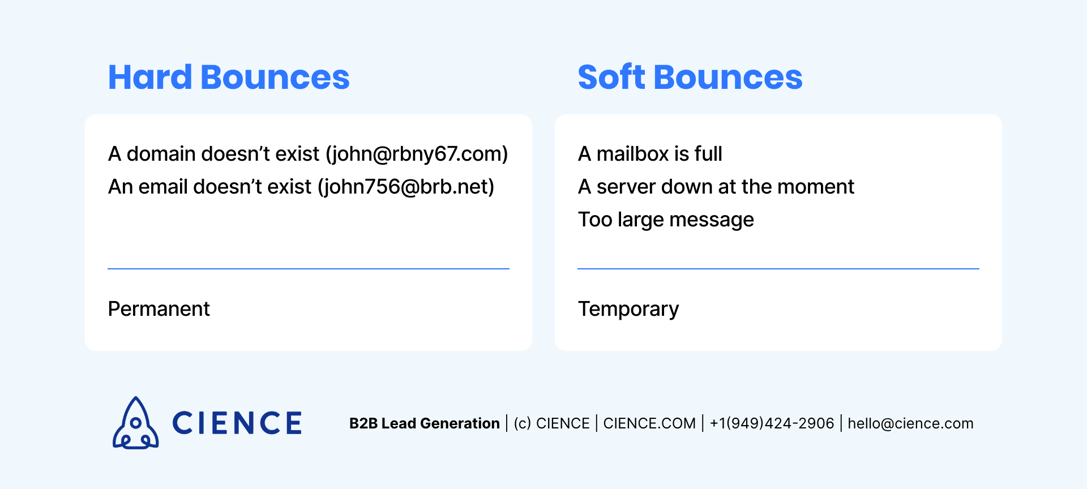Email Bounce Rate
The Email Bounce Rate measures the percentage of emails that get “bounced” back to you from your email campaign. The Bounce occurs when an email cannot reach its recipient and gets redirected back to the sender.
There are hard bounces and soft bounces.

A hard bounce is an email that was not accepted by the recipient's mail server and was bounced back to the sender. Hard bounces are permanent and occur because of an invalid, outdated domain or no-longer-used email address.
A soft bounce is an email that was accepted by the recipient's mail server but was bounced back to the sender. Soft bounces are temporary and can happen due to a variety of reasons, for instance, a recipient’s mailbox is full or there is a temporary issue with the receiving server (or it recognized your email as too long).
What is a High Email Bounce Rate?
Small numbers of bounces are acceptable, it is unlikely to get through an email campaign without a single one of them.
According to Campaign Monitor, an average Email Bounce Rate across all industries is 1.06%. Though each industry has its unique bounce rate, the benchmark is around 2%. Anything higher can be considered worth attention. We recommend basing your average Email Bounce rate on your industry average and your previous numbers.
How to Reduce Bounce Rate?
There are a few aspects of your bounces that are out of your control, but still, there are some ways to reduce them from happening.
1) Avoid using purchased contact lists
You can’t verify how old those emails are. If most of them are outdated or abandoned, you risk getting a high bounce rate and that can get your email blacklisted. That stain is hard to get out of.
2) Keep your contact lists clean
Remove invalid emails from it. Don’t send it to stale contacts. If a prospect wasn’t contacted for a long time, there is a high chance of a hard bounce.
3) Send your emails from the address at your business domain
This will ensure that you won’t get into the spam filters. Mailbox providers look for that in order to “catch” spam.
Summary
The Email Bounce Rate is a percentage of emails that cannot reach a recipient’s mailbox and get redirected back to a sender. A generally accepted Email Bounce Rate is 2%, but you should base your benchmark on your industry’s average and your company’s statistics.
You can improve your Email Bounce Rate by avoiding using free webmail addresses, purchased contact lists and keeping your contact list hygiene. Get more advice on How to Increase Your Email Deliverability from CIENCE.
